Great Reed Warbler, Grote Karekiet, Drosselrohrsänger, Rouxinol-grande-dos-caniços, Carrecerín Tordal
Spotted in the Alentejo region of Portugal. Great Reed Warbler sound
The Great Reed Warbler, Acrocephalus arundinaceus, is an Eurasiaan songbird in the genus Acrocephalus. It used to be placed in the “Old World warbler” assemblage, but nowadays is recognized to be part of the marsh- and tree-warbler family (Acrocephalidae).
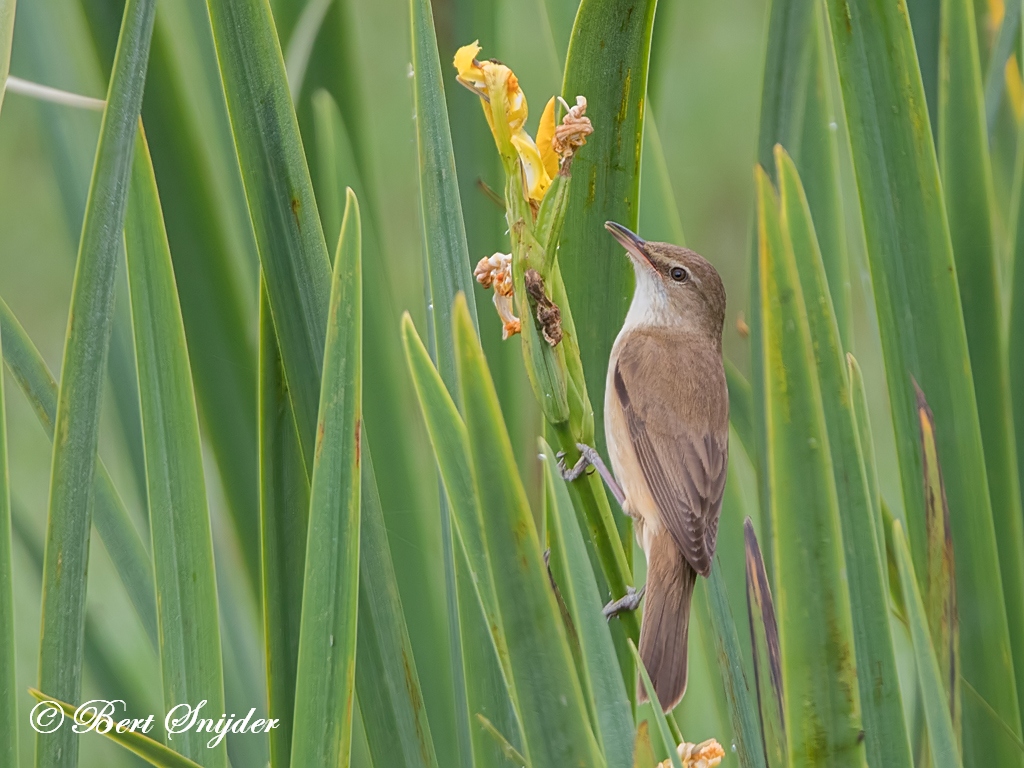
More photos at the bottom of this page:
This is a large thrush-sized warbler, 16-20cm in length. The adult has an unstreaked brown upperparts and dull buffish-white chin and underparts. The forehead is flattened, and the bill is strong and pointed. It looks very much like a giant Eurasian Reed Warbler (A. scirpaceus), but with a stronger supercilium.
The sexes are identical, as with most warblers, but young birds are richer buff below.
The song is very loud and far-carrying. Its main phrase is a chattering and creaking carr-carr-cree-cree-cree-jet-jet, to which the whistles and vocal mimicry typical of marsh-warblers are added.
A. arundinaceus breeds in Europe and westernmost temperate Asia. It does not breed in Great Britain, but is a regular visitor. Its population has in recent decades increased around the eastern Baltic, while it has become rarer at the western end of its range. It is migratory, wintering in tropical Africa. This bird migrates north at a rather late date, with some birds still in winter quarters at the end of April.
While no subspecies are diagnosable in this bird, mtDNA haplotype data indicates that during the last glacial period there were two allopatric populations of this species. The Great Reed Warblers in southwestern and southeastern Europe were at that time apparently separated by the Vistulian-Würm ice sheets and the barren land around these. Though the data is insufficient to robustly infer a date for this separation, it suggests the populations became separated around 80,000 years ago – coincident with the first major advance of the ice sheets. The populations must have expanded their range again at the start of the Holocene about 13,000 years ago, but even today the western birds winter in the west and the eastern birds in the east of tropical Africa.
This passerine bird is a species found in large reed beds, often with some bushes. On their breeding grounds, they are territorial. In their winter quarters, they are frequently found in large groups, and may occupy a reed bed to the exclusion of almost all other birds. Like most warblers, it is insectivorous, but it will take other prey items of sufficiently small size, even including vertebrates such as tadpoles.
3-6 eggs are laid in a basket nest in reeds. Some pairs are monogamous, but others are not, and unpaired males without territory usually father some young also.
The Great Reed Warbler apparently undergoes marked long-term population fluctuations. Able to expand its range again quickly when new habitat becomes available, this common and widespread bird is considered a Species of Least Concern by the IUCN.
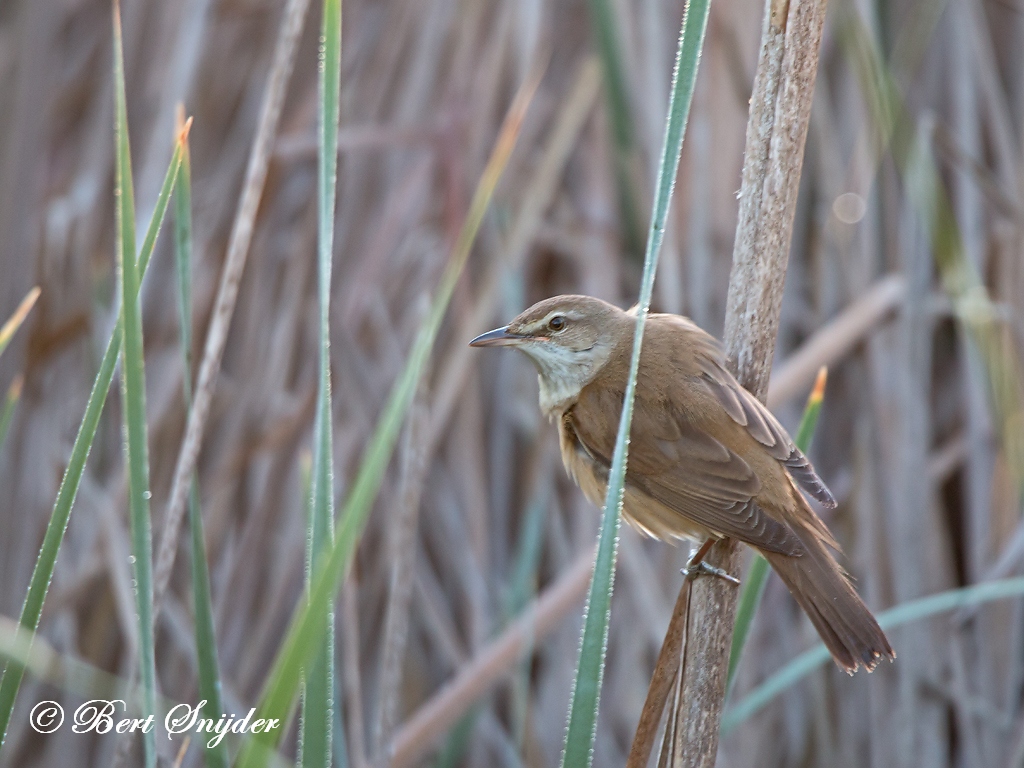
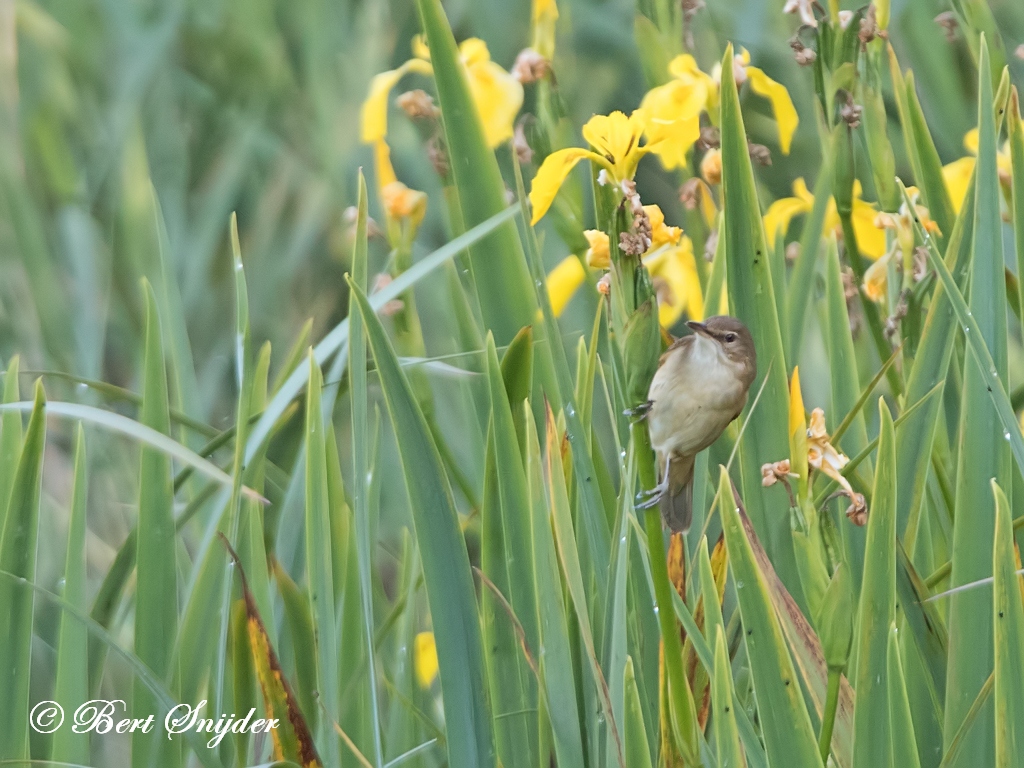

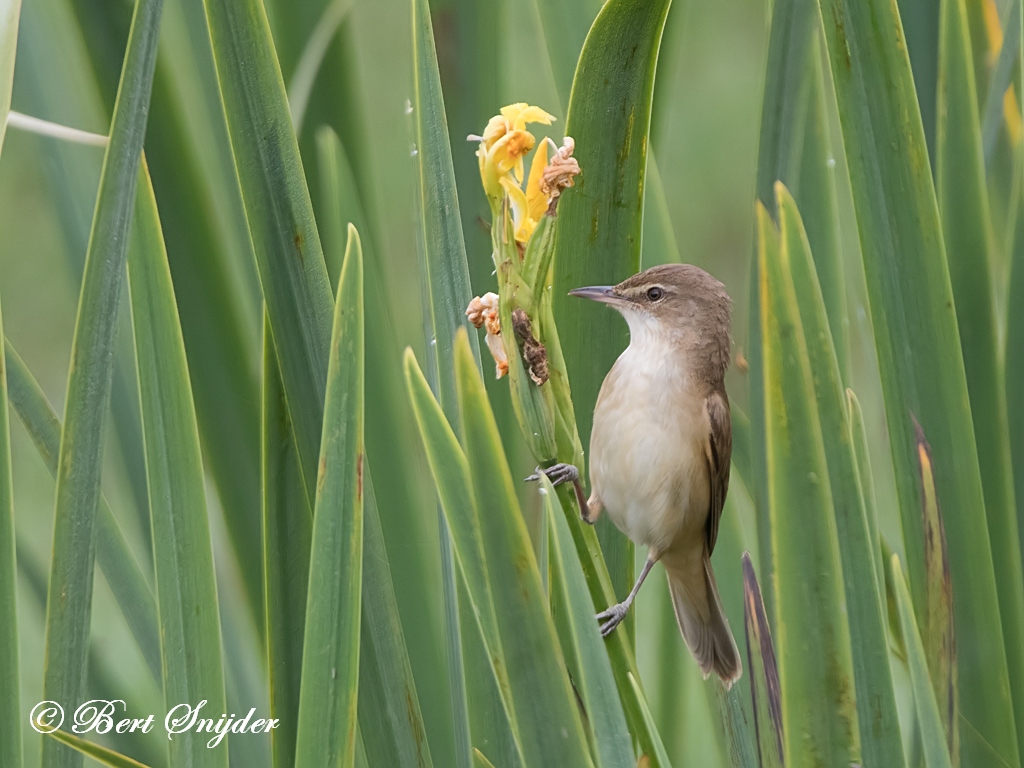

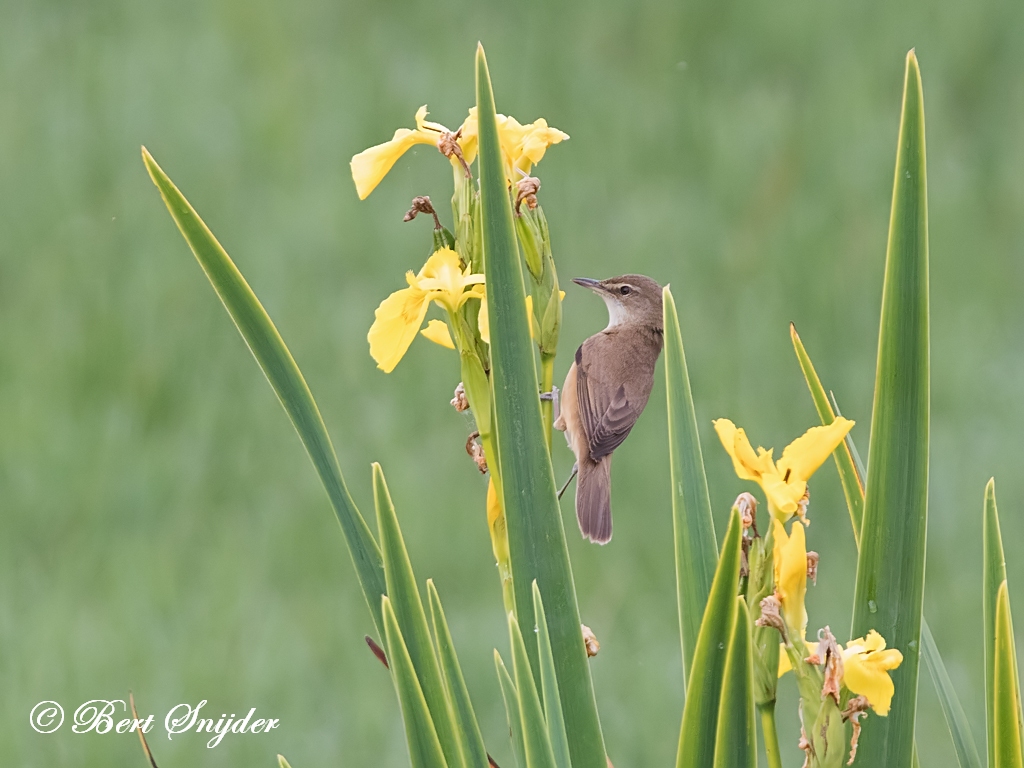

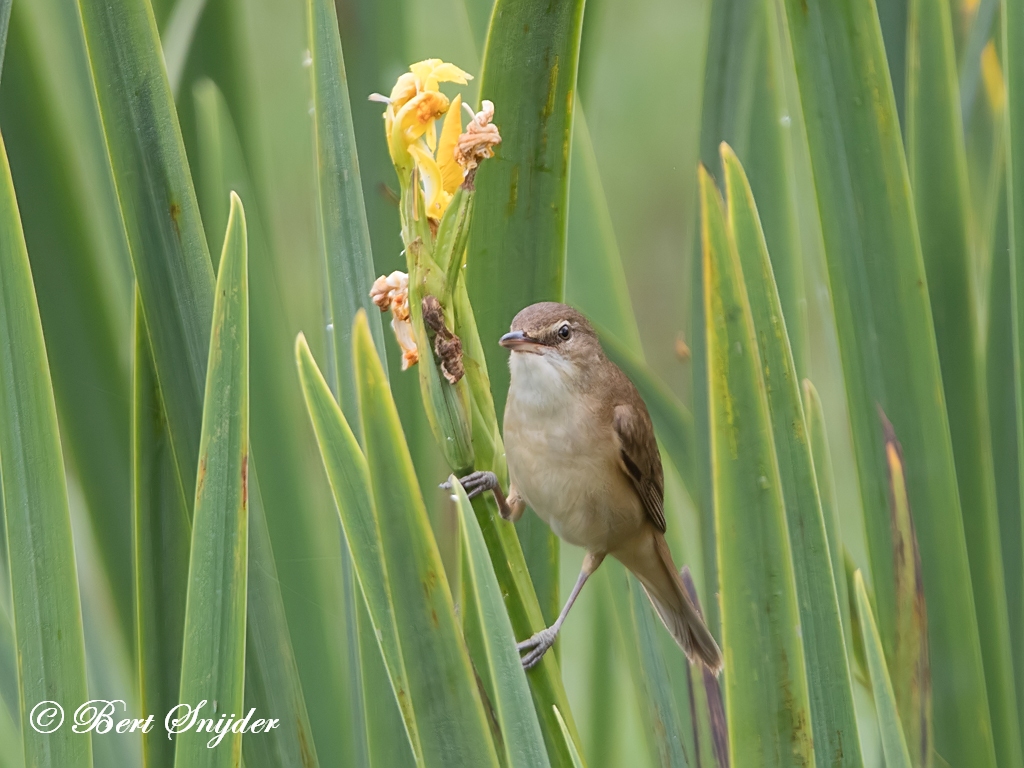

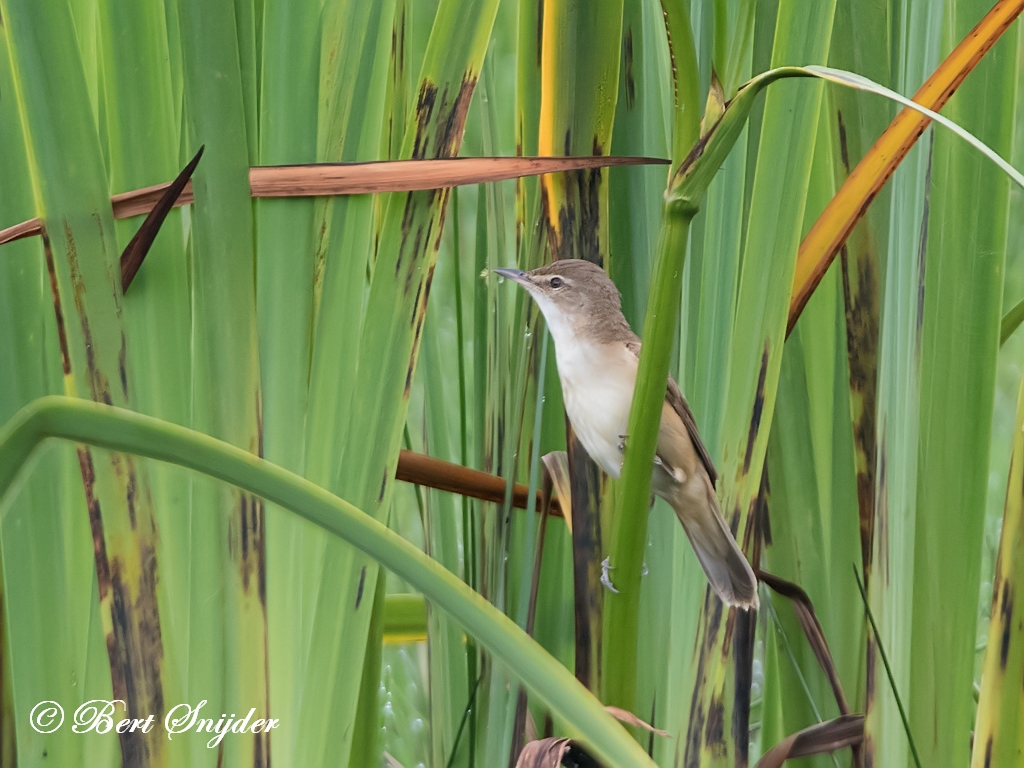

Other synonyms:
Afrikaans: Grootrietsanger
Asturian: Carricera Rial
Breton: Ar rouzard bras
Catalan: Balquer, Buscarla grossa, Xitxarra dels matolls
Catalan (Balears): Buscarla grossa
Valencian: Xitxarra dels matolls
Czech: Rákosník velký
Welsh: Telor mawr y cyrs, Telor wawr y cyrs
Danish: Drosselrørsanger
German: Drossel-Feldrohrsänger-arundinaceus, Drosselrohrsaenger, Drosselrohrsänger
English: European Great Reed-Warbler, Great reed warbler, Great Reed-Warbler
Esperanto: turdkanbirdo
Spanish: Carricerín Tordal, Carricero Tordal
Estonian: Rästas-roolind
Basque: Balquer , Lezkari karratxin, Lezkari karratxina
Finnish: Rastaskerttunen
Faroese: Trastljómari
French: Rousserolle turdoïde
Irish: Mórcheolaire Giolcaí
Galician: Balquer , Folosa grande
Croatian: Trstenjak droš?i?, Veliki Trstenjak
Hungarian: Nádirigó
Indonesian: Kerak basi ramai
Icelandic: Reyrsöngvari
Italian: Cannareccione, Cannareccione eurasiatico
Japanese: nishi ou yoshi-kiri, Nishiooyoshikiri, ooyoshikiri, Ou-yoshikiri
Kwangali: Niini
Latin: Acrocephalus arundinaceus, Acrocephalus arundinaceus arundinaceus
Limburgish: Blyths reetzenger
Lithuanian: Didžioji krakšl?
Dutch: Grote Karekiet
Norwegian: Trostesanger
Polish: Trzciniak, Trzciniak zwyczajny
Portuguese: rouxinol grande dos caniços, Rouxinol-grande-dos-caniços
Romansh: Channarel grond
Slovenian: rakar
Shona: Timba
Albanian: Bilbilthi fushor i kallamave
Sotho, Southern: Soamahlaka-kholo
Swedish: Trastsångare
Swahili: Shoro Mkuu
Travel Birdwatching Holiday Alentejo, Vacation Portugal for birders to see birds on your trip